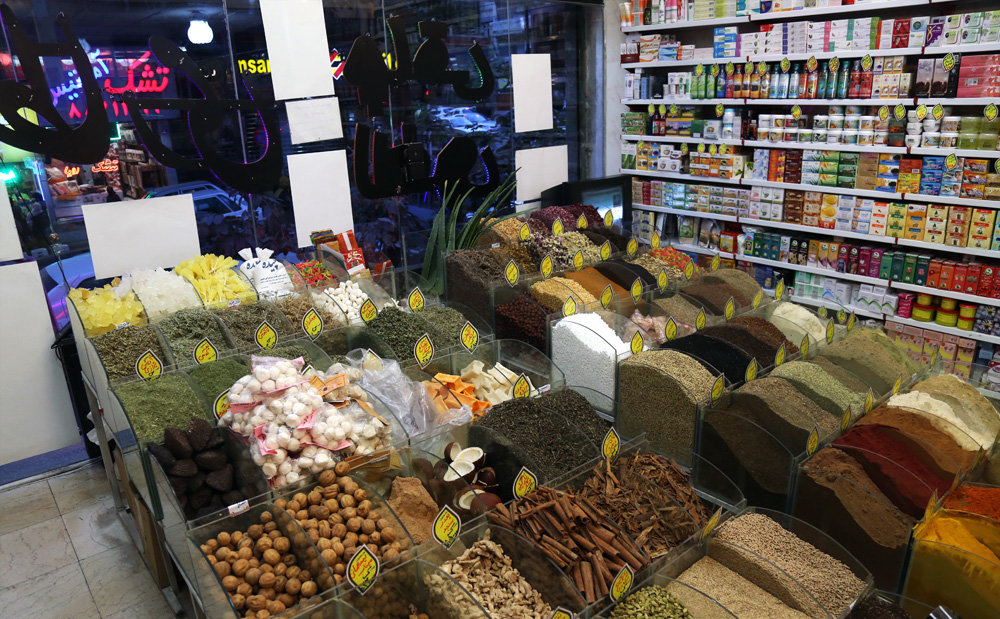Medicinal and aromatic plants, which are found both domestically and in overseas markets, play a significant role in meeting the demands of the traditional medicine markets.
Not surprisingly, medicinal plant production and exports show a rising trend in Iran.
Speaking to Financial Tribune, Ali Moradi Behjou, an expert on production and processing of medicinal plants with the Ministry of Agriculture, said Iran is home to 2,300 species of medicinal and scented plants, and has a good status in the world in terms to diversity.
“However, lack of international standards in production and processing, and absence of national brands in global markets are hindering Iranian medicinal plants industry, despite the impressive varieties,” he said.
“Unfortunately, harvesting medicinal plants is not done according to scientific and technical principles in Iran and the plants are mainly harvested traditionally.”
Production and Export
According to Behjou, about 180,000 hectares of land are under the cultivation of medicinal plants in Iran and annual medicinal herb production capacity stands close to 200,000 tons.
He noted that production has had an upward trend in recent years and is projected to see a 10-15% rise by the end of the current Iranian year (March 20, 2018).
The provinces of Khorasan Razavi, Fars, Isfahan, Kerman and Hamedan are major cultivators of medicinal herbs in Iran.
Iran’s medicinal plants market is worth around $500 million, while the global market is worth around $120 billion per annum.
India, China, Mexico, Egypt, Morocco and Chile are the biggest producers and exporters of such plants.
Plants like cinnamon, ginger and ginseng, which are not produced in Iran, are imported.
Currently, 30 companies are producing natural herbal remedies in Iran, and all herbal medicines are manufactured on par with the same quality standards as pharmaceutical drugs.
Iran exported around $440 million worth of medicinal herbs during the last Iranian fiscal (March 2016-17). UAE, Iraq, Qatar, Hong Kong, Spain, Italy and France were the main customers.
Saffron is taken into account as a major medicinal plant in Iran. More than $246 million of last year’s exports was related to saffron, as 172 tons of the precious spice were exported to 47 countries, including the US, during the period. The figure showed an over 32.3% rise in weight compared to the previous year.
Last year’s production stood at over 350 tons, indicating a 25% rise year-on-year. Iran is the world’s biggest saffron producer and accounts for more than 93% of the global production.
Behjou put per capita medicinal plants consumption in Iran at around 250 grams per year.
Consumption rates are especially high in the US, Germany, Switzerland and Canada.
The Ministry of Agriculture plans to create about 79,000 direct and close to 320,000 indirect jobs in this field during the Sixth Five-Year Development Plan (2017-22).
Development of Medicinal Plants
As per the budget bill of the next fiscal year (March 2018-19), the government is to allocate 840 billion rials ($20.07 million) for the development of medicinal plants industry, advisor to Iran’s Agriculture minister, Peyman Yousefi-Azar, told IRNA.
According to Yousefi-Azar, Germany has a turnover of €35 billion in medicinal plants, which equals Iran’s oil revenues.
“Medicinal plant exports have been predicted to reach $3.5 billion by March 2025-26,” he said.
Medicinal plants still form the basis of traditional or indigenous health systems and are reported by the World Health Organization to still be used by a majority of populations in most developing countries.
WHO has adopted a strategy to promote traditional medicines between 2014 and 2023 to support member states in developing proactive policies and implement plans to strengthen the role of traditional medicine in the health sector.
Traditional remedies have long been used by the people, especially in rural Iran, and most households even in urban areas store herbal petals, essences, powders and extracts to provide relief for different kinds of ailments.
Iranian traditional medicine dates back more than 3,000 years. Persian polymath Avicenna’s ‘Book of Healing’ and ‘Canon of Medicine’ are the most authoritative sources in this field.



